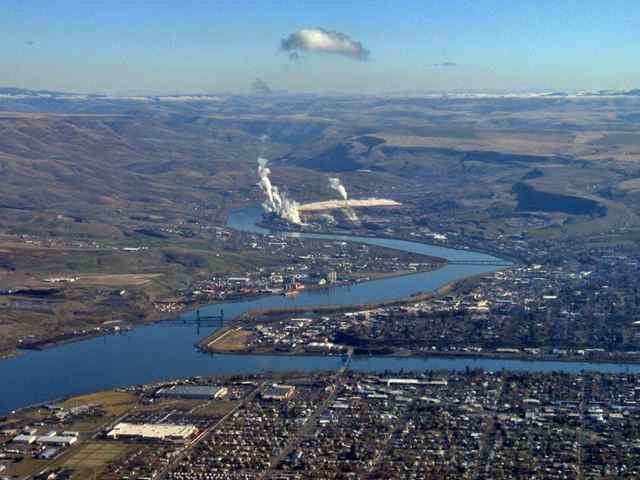forum
library
tutorial
contact

Environmentalists Try to
Muddy Waters About Dredging
by John McKern
Walla Walla Union-Bulletin, December 30, 2014
|
the film forum library tutorial contact |

|
Environmentalists Try to
by John McKern
|
 Environmentalists are suing the U.S. Army Corps of Engineers to block dredging in the lower Snake River.
Environmentalists are suing the U.S. Army Corps of Engineers to block dredging in the lower Snake River.
The U.S. Congress (one that got things done, not this one) authorized that navigation channel in 1945. That law required a channel 250 feet wide and 14.5 feet deep.
The Corps constructed four dams authorized and funded by Congress. Ports, typically one for each county abutting the river, developed in conjunction with the dams. Port facilities developed where grains and logs could be transported downriver and fertilizer and fuel could come upriver.
Each reservoir is about 100 feet deep at the dam and tapers upstream to about 20 feet deep at the next dam. Each fluctuates 3 to 5 feet with the exception of Lower Granite. The authorized channel is 14.5 feet deep, so 3 to 5 feet must be added for reservoir fluctuation. The channel approaching each lock from downstream must occasionally be dredged to maintain 19.5 feet minimum depth.
At the upper end of Lower Granite reservoir, the navigation channel extends up the Clearwater and Snake rivers to Port of Lewiston facilities. In these areas, silts and sands primarily from Idaho farms, fields, roads and logging activities accumulate as the flows slow down in the reservoir.
Lower Granite reservoir would have flooded lower elevations in Lewiston, but levees to prevent it were constructed. Seepage behind the levees collects in ponds and is pumped back into the river.
To make the waterfront aesthetically more pleasing, the levees were kept low, landscaped, and equipped with restrooms and trails for recreation. To prevent floodwaters from overtopping the levees in the most extreme floods, the reservoir can be lowered as much as 28 feet at Lower Granite Dam. The water level stays the same in Lewiston and slopes down to the dam.
When I worked for the Corps in the 1980s, we collaborated with federal and state fisheries and environmental agencies to develop the least damaging time and methods for the dredging. That is what the Corps is doing now -- complying with the law's requirements.
A four-barge tow can transport as much as 134 train cars or over 700 trucks. Urban railroad spurs have been removed, and highways have deteriorated since the dams were built.
Environmentalists are wasting taxpayer dollars on frivolous lawsuits and have thrown up roadblocks for over three decades to legally mandated maintenance of important infrastructure.
learn more on topics covered in the film
see the video
read the script
learn the songs
discussion forum
